George Catlin
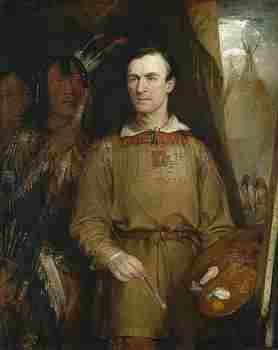
1796-1872
This portrait of George Catlin was painted in London
by William Fisk, an artist who admired his work.
All of the other pictures here are George Catlin's.
All of the other pictures here are George Catlin's.
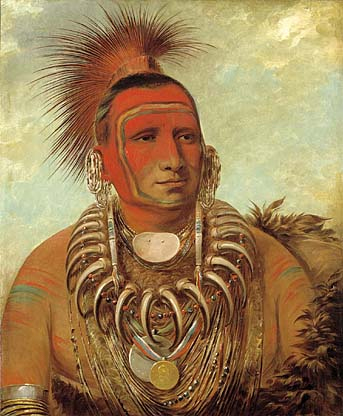
|
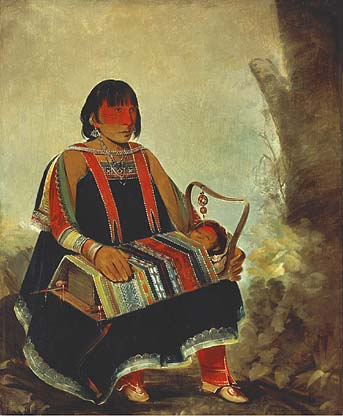
|
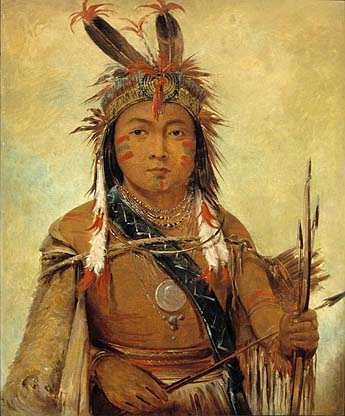
|
George Catlin was born in 1796 in Wilkes-Barre, Pennsylvania. His father was a lawyer and George became a lawyer too, but the work didn't interest him. He wanted to be an artist. He was self-taught and he found he could earn some money by painting portraits. Cameras had not yet been invented and getting a picture painted of yourself was a popular thing to do for people who could afford to pay the artist. But George was still not satisfied with that kind of work. He wanted to paint something more exciting and important. Then one day in Philadelphia, as George wrote, "Some ten or fifteen noble and dignified-looking Indians, from the wilds of the 'Far West,' suddenly arrived in the city, in all their classic beauty. In silent dignity, these lords of the forest strutted about the city for a few days, wrapped in their pictorial robes. Man, in the simplicity of his nature, is surely the most beautiful model for the painter. The history and customs of such a people, preserved by pictorial illustrations, are themes worthy the life-time of one man, and nothing short of the loss of my life shall prevent me from visiting their country, and becoming their historian. I set out on my perilous undertaking with the determination of reaching every tribe of Indians on the Continent of North America, and of bringing home faithful portraits of their principal personages, and full notes of their character and history for the use and instruction of future ages."
The American West was called "wild" at the time that George Catlin decided to go there. Wars were fought between the white settlers who wanted the land and the native American Indians who had always lived there. What do you think George Catlin meant when he said it was "perilous" and "nothing short of the loss of my life shall prevent me from visiting their country"? When he spoke about painting his pictures "for the use and instruction of future ages", who do you think George Catlin wanted to learn about the Indians?
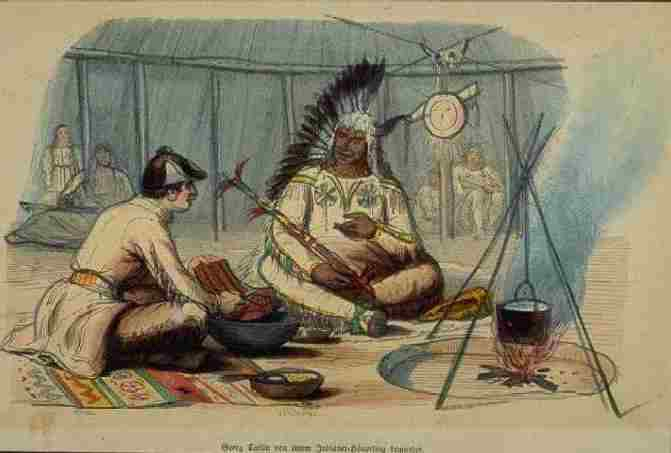
|
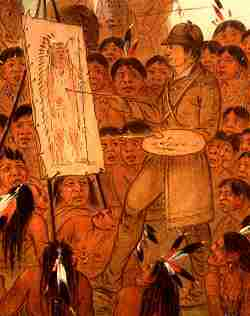
|
In 1830 George Catlin went to Missouri to meet Governor William Clark, the man who had earlier led the Lewis and Clark expedition to explore and map our country's western frontier. He got permission from Governor Clark to travel in the Indian Territory and for the next six years he met and spoke with as many Indians as he could, and made sketches and paintings of them as you can see in these self-portraits . He brought his art work to exhibit in shows in New York City, and later in London, England and Paris, France. He also took Indians with him for these exhibitions so people could learn more about their culture. He said he wanted to show “the living manners, customs, and character of an interesting race of people, who are rapidly passing away from the face of the earth--lending a hand to a dying nation, who have no historians or biographers of their own”.
How did George Catlin feel about the Indians he met? What did he mean when he talked about "lending a hand to a dying nation, who have no historians or biographers of their own”? What kind of man was George Catlin? What words would you use to describe his character and personality?
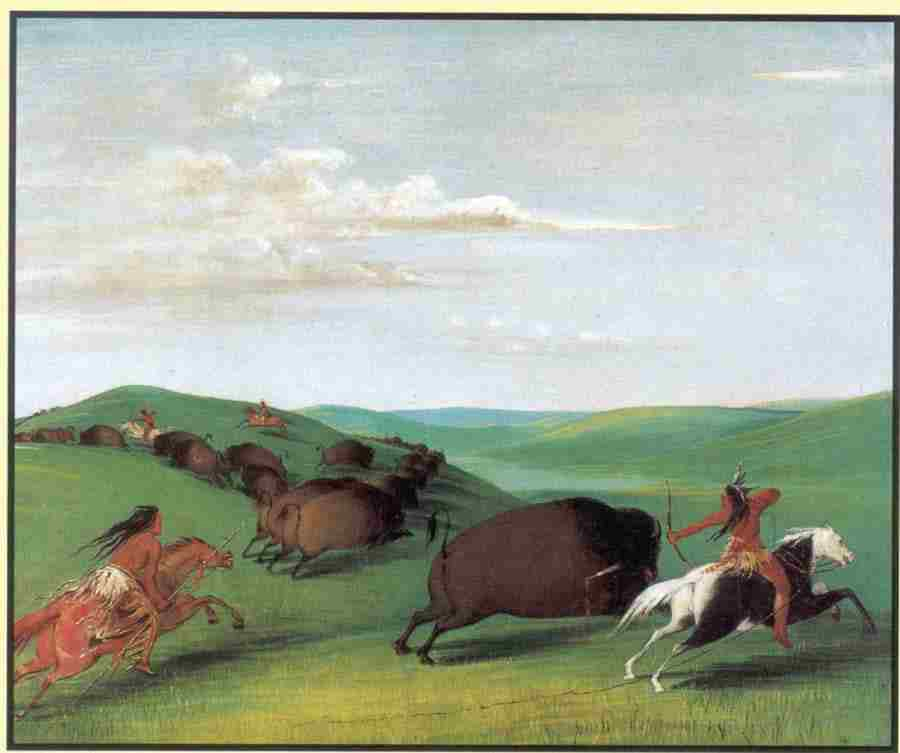
The buffalo was very important to the Indians of the Great Plains. They hunted buffalo for food, of course, but they also used them for many other things. Their skins or hides were made into shoes, clothing and tents to live in. Their stomachs were used as sacks to carry water. The bones were used to make arrowheads, needles, and fishhooks. The bones were also used to make music by banging them together, or as sticks to hit the stretched skin of the buffalo when it was made into a drum. There were hardly any trees on the Great Plains, only miles and miles of grassland. So buffalo bones were also used instead of wood to make sleds to drag along the ground and carry things on. And buffalo droppings, or dung, was burned like wood. The fires could be used for warmth, light, and cooking. Their tails were used as fly swatters and even their hooves were ground up and mixed with water to make glue.
What does the Indians' use of all the parts of the buffalo tell you about their intelligence and their ability to survive in the wilderness? What do you think would happen if the Indians could not hunt the buffalo?
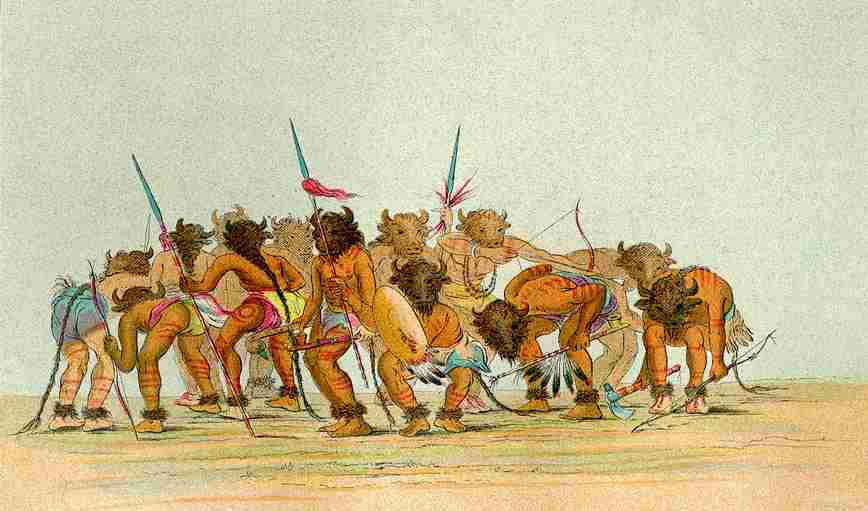
Because the Indians could not live without them, they respected these powerful animals and never hunted them for sport. They killed only as many buffalo as they needed. They had special ceremonies and sang and danced before they hunted. They prayed that the buffalo's spirit would forgive them and thanked them for helping them to survive.
Later in our country's history, the white settlers not only hunted the buffalo for sport, they purposely slaughtered as many of the animals as they could until the buffalo almost became extinct. Why would the settlers attack the buffalo when they were fighting the Indians to get their land?
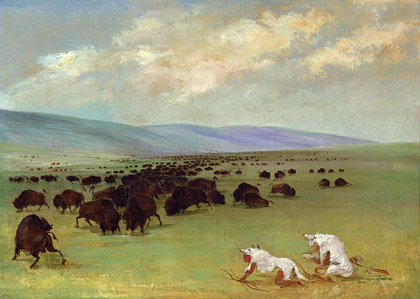
Take a close look at this hunting scene that George Catlin painted. It shows the artist with an Indian guide sneaking up to a herd of buffalo. The guide taught him to put on a wolf skin to disguise himself. Buffalo would not run away from wolves because they could defend themselves from these smaller animals. Wolves would usually eat only buffalo that were sick, injured, or too weak to run or fight back.
Can you tell which figure in the painting is the guide? What weapon is he holding? Which figure is the artist? What weapon is at his side? What do you think the artist is holding in his hand? Did George Catlin come to kill the buffalo?
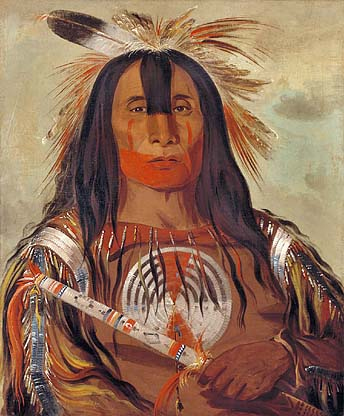
American Indians used to choose names that told something special about the person they were naming. One chief was respected as a wise leader and a great hunter. The hump on the buffalo's back had the best tasting meat, so it was an honor to name the chief Buffalo Bull's Back Fat. Sometimes other people's customs may seem strange or funny to us. But once you understand their reasons for doing things, they make more sense. You don't always have to agree with them or do the exact same thing, but at least you can accept their ideas. That is called tolerance, and it is one of the most important things that George Catlin wanted to teach us. He wanted us to respect the Indians whose land this was before we came here.
Would you like to try to make up a new name? What's your favorite food? Would you like to be named Quarter Pounder With Cheese, Super Size Fries, or Chocolate Shake? Or maybe you would prefer something healthier, with fruits or vegetables. How about Corn Kid or Grape Juice Girl / Guy?
Pick any name you would like and tell why you think you deserve to be called that. You can pick names for your friends and family too. Explain why they should be called their special names.
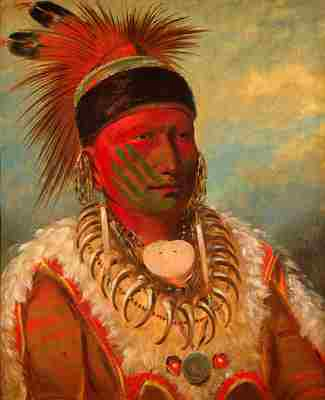
American Indians also used pictures and decorations to tell something special about themselves. Another chief painted a hand on his face because he was good at hand to hand fighting. The hand could also represent or stand for something else, like being "handy" with tools, or being helpful by "lending a hand" to someone.
What would you like to be known for? Do you have any special skill or ability? Would you like to paint a foot on your face because you can run fast or dance well? Would an extra tongue painted on you face show you spoke intelligently or sang beautifully? You could have an extra ear to show that you listened carefully and understood things.
Pick something that tells something special about you and explain why you would like to be known for that. Then draw a picture of yourself to show it. You can also pick more things to draw for your friends and family.
Learn More About George Catlin And The American Indians
Web Sites
The National Gallery of Art has "Adventures with Art-Activiities
and Projects" featuring George Catlin.
http://www.nga.gov/kids/catlin/catlin1.htmlThe Smithsonian American Art Museum in Washington D.C.,where George Catlin's pictures were donated, has this interactive site with interviews and lessons.
http://catlinclassroom.si.edu/
The Library of Western Fur Trade Historical Source Documents has George Catlin's original letters telling about his experiences.
http://www.xmission.com/~drudy/mtman/html/catlin/index.html
This web page from nativeamericans.com tells how each part of the buffalo was used and the home page has many links to information about Indian culture.
http://http://www.texasbeyondhistory.net/kids/buffalo.html
Books
People of the Buffalo: How the Plains Indians Lived by Maria Campbell, Published by Firefly Books, 1992, ISBN (Identification Number): 0888943296
Buffalo Hunt by Russell Freedman, Published by Freedman Holiday House, 1997, ISBN (Identification Number): 0823411591
Sioux: Nomadic Buffalo Hunters by Rachel Koestler-Grack, Published by Blue Earth Books, 2003, ISBN (Identification Number): 0736815406
Art Share is an art appreciation project at Public School
241, Brooklyn, New York, USA
Gary Greenberg
Gary Greenberg